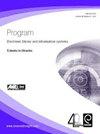基于GIS的历史研究中的CENDARI基础设施
Q Social Sciences
Program-Electronic Library and Information Systems
Pub Date : 2017-05-19
DOI:10.1108/PROG-09-2015-0058
引用次数: 4
摘要
目的本文的目的是提出一种在地理信息系统中利用现有档案资源的方法。设计/方法论/方法论所使用的方法论的本质是确定档案文件与地理空间的语义关系,并将其元数据发展成空间相关的元数据,以便在地理信息系统中使用,并将这些元数据中出现的地名与它们相关的确切地点联系起来。这项研究基于斯图加特当代历史图书馆的两个数字藏品在线服务。这些藏品与第一次世界大战有关,其中包括MAB标准中编制的元数据。研究结果作为研究的结果,开发了两个与海报和配给券有关的元数据样本集。还创建了不同语义背景下文档元数据中提到的地点和区域坐标的同义词库。为了完成该方法,提出了GIS结构的假设和在其中应用元数据的概念。研究局限性/影响研究还提出了有效实施拟议解决方案的局限性,主要在于缺乏在元数据中记录地名的规则和后果。独创性/价值所提出的解决方案的价值是在地理信息系统中使用现有数据的简单方法,以及收集、管理、呈现和分析档案的可能性,这些档案比传统数据库中多了一个参数——空间信息。对已经收集的数据的附加值和有效利用在于强烈建议定义和执行在档案文件元数据中记录地名的规则。这将有助于在任何基于空间的解决方案中广泛使用收集的数据,并有助于将档案与地理空间连接的过程自动化,最终有助于传播收集的资源。本文章由计算机程序翻译,如有差异,请以英文原文为准。
The CENDARI infrastructure in GIS-based historical research
Purpose
The purpose of this paper is to propose a way of using already existing archival resources in the geographic information system (GIS).
Design/methodology/approach
The essence of the methodology used was to identify semantic relations of archival documents with geographical space and develop their metadata into spatially related metadata, ready to use in GIS and to join geographical names occurring in these metadata with exact places to which they were related to. Research was based on two digital collections from the Library of Contemporary History in Stuttgart on-line service. These collections were related to the First World War and they included metadata prepared in MAB standard.
Findings
As the results of the research, two sample metadata sets related to posters and ration coupons were developed. Thesauruses of coordinates of places and regions mentioned in documents metadata in different semantic context were also created. To complete the methodology, the assumptions of the GIS structure and concept of applying metadata in them, have been proposed.
Research limitations/implications
The research also presents limitations in effective implementation of the proposed solutions, which lie mainly in lack of rules and consequences in recording geographical names in metadata.
Originality/value
The value of the proposed solution is easy way of using already existing data in GIS and possibilities of gathering, managing, presenting and analyzing archives with one parameter more than in traditional databases – with spatial information. The added value and an effective use of already collected data lies in the strong recommendation of defining and implementation of rules for recording geographical names in archival documents metadata. This will help in a wide use of collected data in any spatial-based solutions as well as in automation of process of joining archives with geographical space, and finally in dissemination of collected resources.
求助全文
通过发布文献求助,成功后即可免费获取论文全文。
去求助
来源期刊

Program-Electronic Library and Information Systems
工程技术-计算机:信息系统
CiteScore
1.30
自引率
0.00%
发文量
0
审稿时长
>12 weeks
期刊介绍:
■Automation of library and information services ■Storage and retrieval of all forms of electronic information ■Delivery of information to end users ■Database design and management ■Techniques for storing and distributing information ■Networking and communications technology ■The Internet ■User interface design ■Procurement of systems ■User training and support ■System evaluation
 求助内容:
求助内容: 应助结果提醒方式:
应助结果提醒方式:


